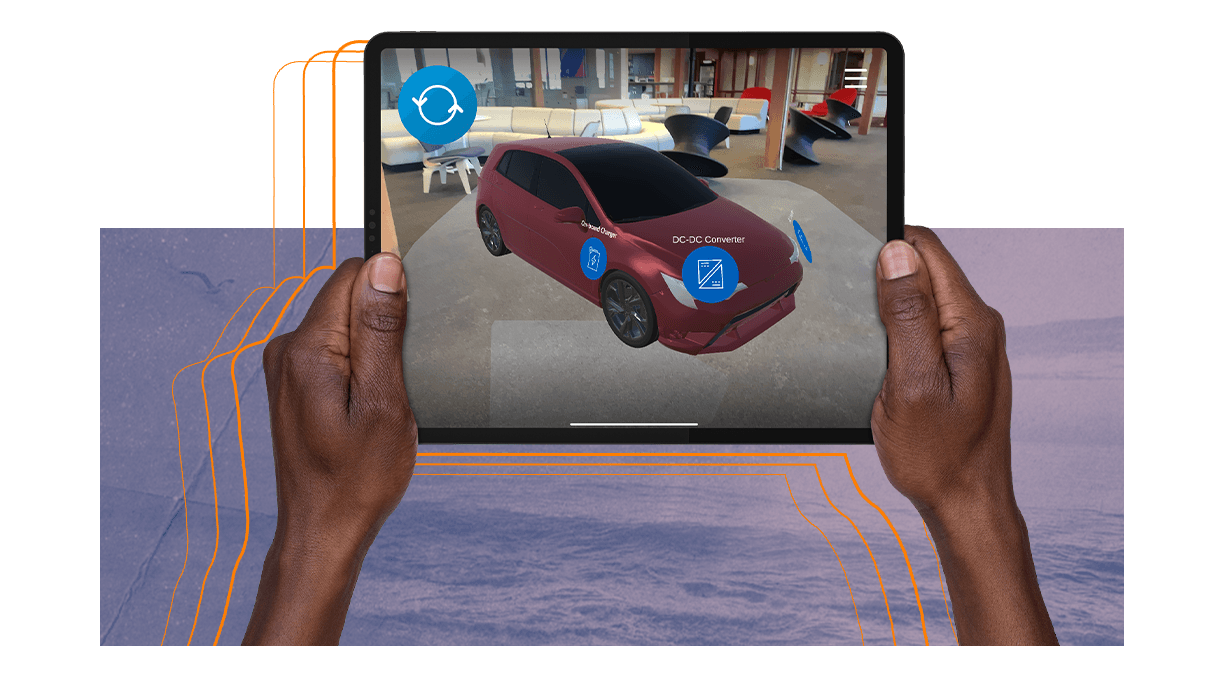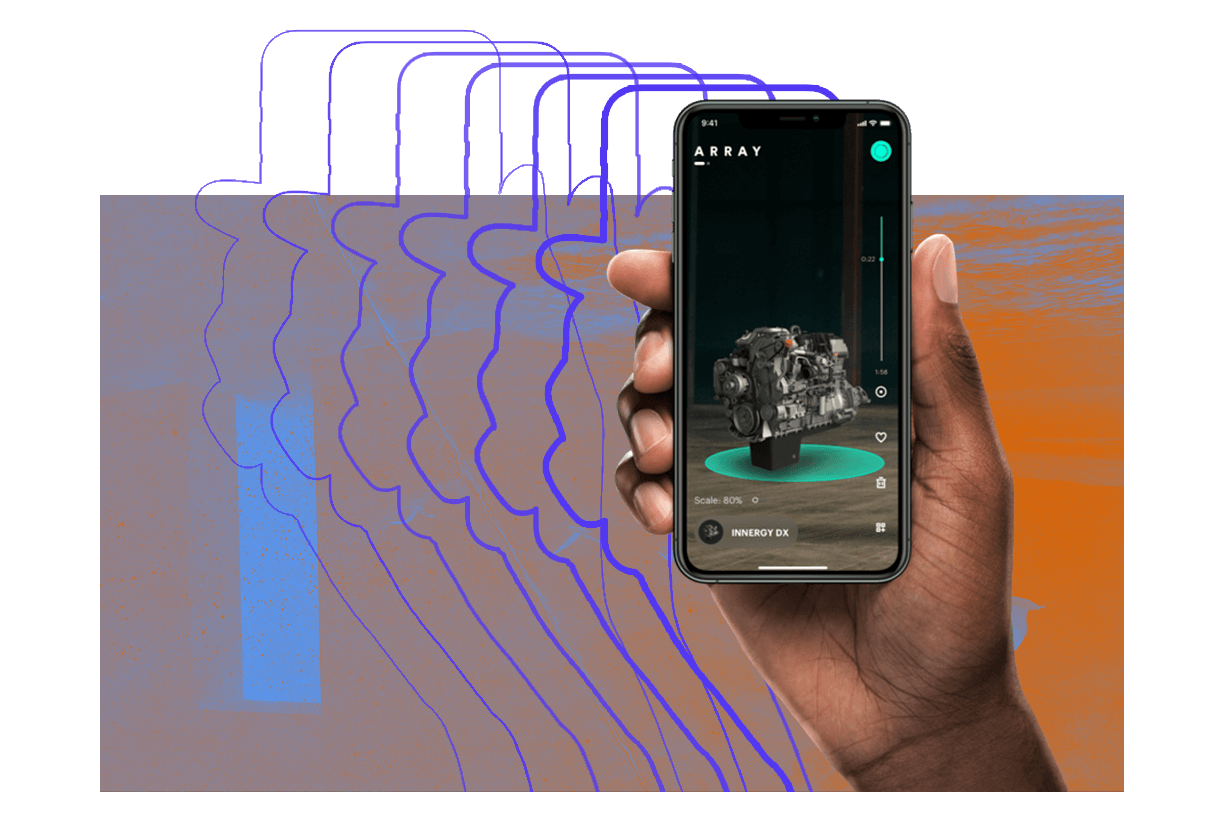From its start in the mid 20th century, to its growing prevalence in modern society, augmented reality has enabled us to impose virtual objects into reality to entertain us, expand our understanding of technology, help consumers make purchasing decisions, and empower interactive, virtual demos.
While it may seem gimmicky to some, augmented reality should be part of every company’s toolkit for its versatility and range of benefits. Let’s take a look at eight augmented reality examples that showcase what’s possible with AR.
7 augmented reality examples that changed business
1. Pokémon Go: Putting augmented reality on a global stage
Many people didn’t know augmented reality could exist in their pockets until Pokémon Go hit app stores in 2016 and took the world by storm. Video games have been going viral for years—what made Pokémon Go different was its use of augmented reality on anyone’s phones, which inspired masses of people to explore their neighborhoods and cities in search of pokémon, treasure, and gym battles.
Though the game wasn’t the first instance of augmented reality, its virality brought AR to the global stage, showing off its potential for calls to action and increasing interactivity in the app.
2. IKEA Place and Shopify: Using AR to drive product sales
Demoing products doesn’t always involve a sales rep with AR. In these augmented reality examples, IKEA, Shopify, and other retailers have harnessed the power of 3D models to allow customers to see what products will look like in-person.
For IKEA’s app, Place, augmented reality calculates a user’s room size and allows the user to place full-scale furniture in their homes to preview if the furniture will fit in their spaces. For Shopify store owners, this means introducing 3D models of their products in the app so customers can see every angle as if they were looking at the items in a store. For the retail industry, augmented reality takes the guesswork out of the buying process and could increase conversions by up to 250%.
3. Eaton: Boosting trade show performance with AR
When we were approached by Eaton to improve their trade show experience, we used AR technology to superimpose a car onto the trade show floor though an app to highlight Eaton’s electronic components. Not only could trade show attendees clearly see Eaton’s products, but they could get specific insights into how they worked at the show without needing to set up another demo with a rep later.
The best way to learn is through real world examples, and augmented reality allows companies with advanced products to showcase them in a way that tells a clear and compelling story.

4. Google Expeditions: Enhancing learning through AR
Augmented reality also has the potential to transform education, and Google has been one of its early adopters with the launch of Google Expeditions in 2015. Using a mobile app, teachers can push the boundaries of their classroom by allowing students to explore 360 degree scenes through virtual reality and view 3D models in the classroom using augmented reality.
When AR is used in the learning industry, the benefits include increased engagement and higher learner retention. While Google Expeditions was created for use in schools, there are applications for AR in corporate learning, too.
5. PEZ Play: Using gamification to tell a brand story
One of the more lighthearted augmented reality examples is PEZ Play, created by the candy company to gamify their collectible candy dispensers. Using the PezPlay app, PEZ packaging can be scanned to unlock a PEZ world full of games, even allowing users to place PEZ characters in the real world. Using AR in this way is a great way to tell a story with your brand and build on what your customers already love about your products.
6. Spaulding Rehabilitation Center: Applying AR to the healing process
At Spaulding Rehabilitation Center, the Inspire lab has found a remarkable way to use augmented reality to help their patients heal. Through an AR headset, spinal trauma and similarly impaired patients are able to follow a virtual PacMan through the halls of the hospital to build muscle, increase their pace, and learn to keep their head steady.
The PacMan AR program has varying speeds that it uses to challenge and improve patient mobility, and it can be customized to fit each patient’s current ability. This is a perfect example of augmented reality apps for healthcare really making an impact, giving people added interactivity as they face rehabilitation can empower their healing journeys.
7. Array: Making AR effortless with dynamic product demos
One of the biggest benefits to AR that we can’t reiterate enough is that it makes demoing products easier, especially those large, high tech products. Sales reps don’t have to think twice about showcasing these products to potential customers when they can do so by opening an app on their phone. That’s exactly why Array exists. Array is an augmented reality app that allows users to upload 3D assets of their product and save those assets in a product portfolio for easy demoing when engaging with potential customers. Added bonus: the simplicity of Array’s UI makes not only adding assets to the app and demoing products effortless, it also makes for easy adoption of the app by reps.
Beyond the ability to demo the size of a product, AR is more than worth it when you consider its ability to give customers an ‘under the hood’ look at your products. AR can detail how each component works, putting visuals to processes that happen inside of a product and that can be hard to explain. This is another challenge with in-person, which is why we think it’s worth investing in an AR app like Array. Less worrying about transport or how to communicate all of the comprehensive features = more time for your sales team to focus on making the product stand out.

Augmented reality is the way forward
Still think AR is a gimmick? After reading through these augmented reality examples, hopefully you have a new understanding of just how powerful this tool can be for your business.
As you continue to look for ways to improve your sales funnel, train your employees effectively, and build a better world, consider this: augmented reality could be the next step to get there.
